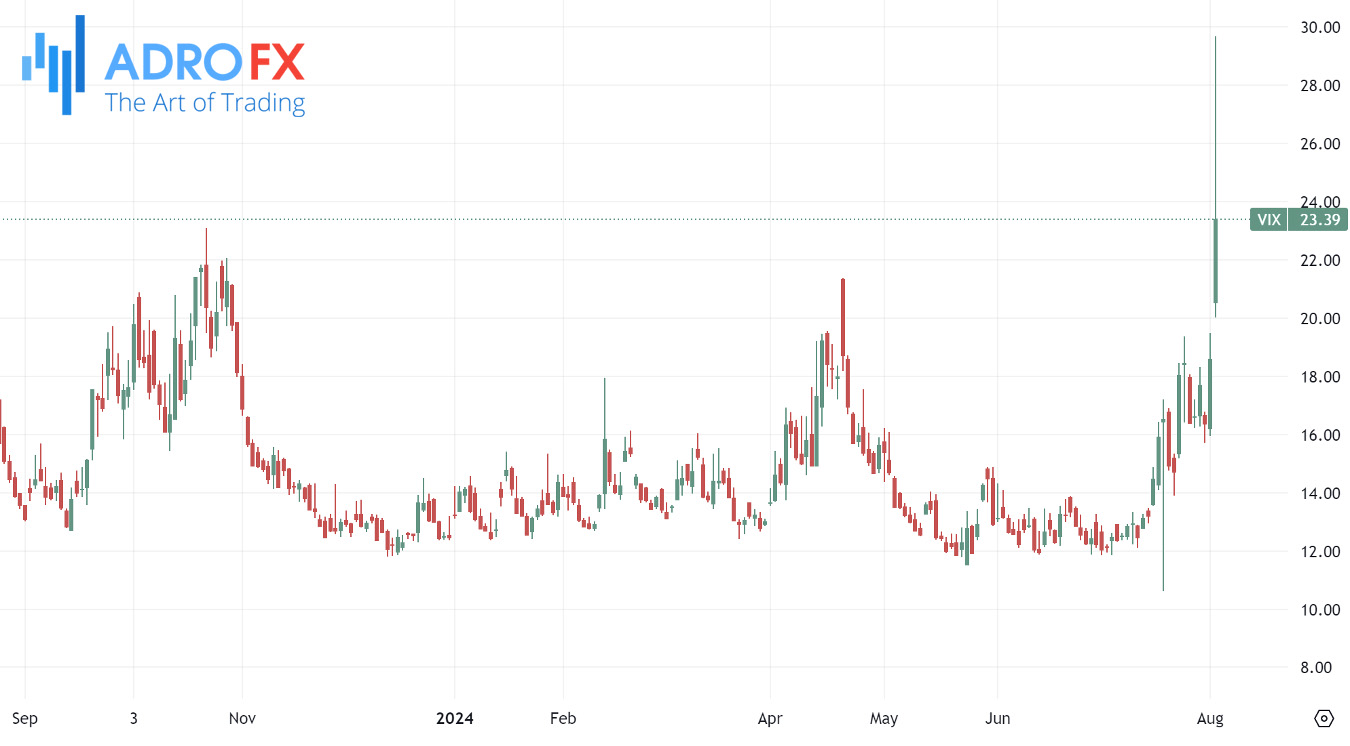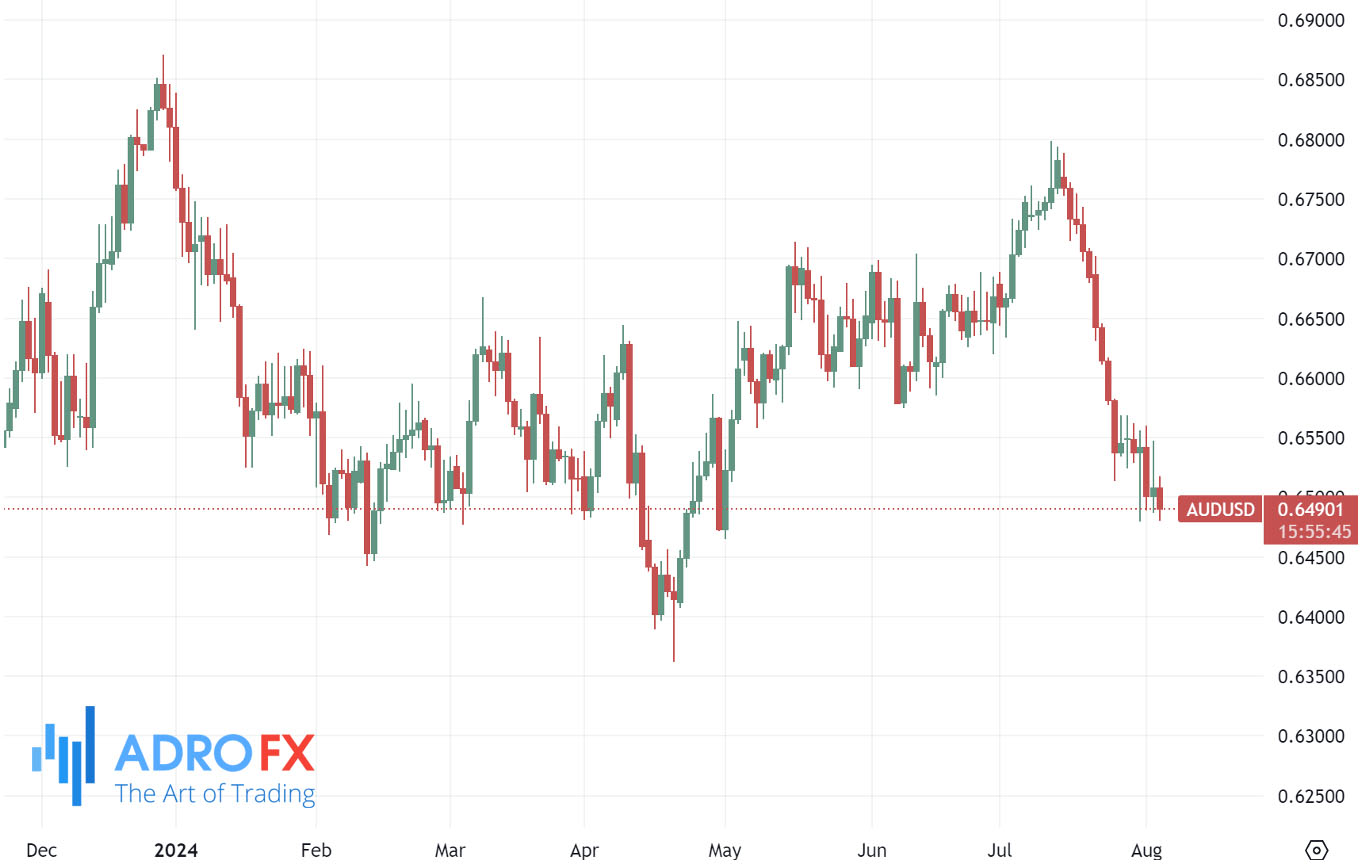Nasdaq Enters Correction Territory Amid Weak Jobs Report, Recession Fears Spike | Daily Market Analysis

Key events:
- USA - S&P Global Services PMI (Jul)
- USA - ISM Non-Manufacturing PMI (Jul)
- USA - ISM Non-Manufacturing Prices (Jul)
The Nasdaq fell sharply on Friday, closing in correction territory due to a significantly weaker-than-expected jobs report, raising fears of a potential recession and causing a surge in market volatility.
The NASDAQ Composite dropped 2.5%, closing 10.2% below its July peak of 18,671.07. The Dow Jones Industrial Average declined by 611 points, or 1.5%, while the S&P 500 decreased by 1.9%.

Economic concerns led to increased volatility, with the CBOE Volatility Index, known as the fear index, reaching a 15-month high of 24.12, the highest level since March 2023.

Additionally, economic anxiety was reflected in the yield on 10-year Treasuries, which plunged 185 basis points to 3.79%, the lowest level since December.
Tech giants Amazon and Intel saw significant declines due to disappointing quarterly results, which added pressure to the broader market, despite gains in Apple.
Intel Corporation (NASDAQ: INTC) saw its stock plummet nearly 27% as its June quarter earnings missed expectations. The company also announced the suspension of its dividend and a 15% workforce reduction as part of its turnaround strategy. Amazon.com Inc (NASDAQ: AMZN) experienced a 9% drop in stock value after issuing a weaker-than-expected revenue outlook and warning of slowing online sales as consumers become more cautious with their spending. Conversely, Apple Inc (NASDAQ: AAPL) traded 2% higher following stronger-than-expected revenue and profit for the June quarter, driven by slightly better-than-expected iPhone sales, despite a year-over-year decline in device sales amid increasing competition in China.
The USD/JPY pair faced selling pressure near 145.20 during the Asian trading hours on Monday, driven lower by a weakening US Dollar following disappointing US employment data. Market participants are awaiting the US ISM Services Purchasing Managers Index report for July, expected to rise to 51.0 from June's 48.8, for a new direction.

The US Dollar is facing pressure due to a weakening labor market in July. Nonfarm payrolls increased by only 114,000, a decline from June's revised figure of 179,000 and below the anticipated 175,000. The Unemployment Rate rose to 4.3%, the highest since late 2021, surpassing the predicted 4.1%. Average Hourly Earnings saw a modest increase of 0.2% month-over-month, falling short of the expected 0.3%.
Geopolitical tensions in the Middle East could boost the Japanese Yen as a safe-haven currency. US Secretary of State Tony Blinken informed G7 members of a potential imminent attack by Iran and Hezbollah on Israel. Additionally, expectations of further monetary tightening by the Bank of Japan and the unwinding of carry trades may support the JPY in the near term.
GBP/USD fell to around 1.2790 during the Asian session on Monday, influenced by the weaker US Dollar. The Greenback is challenged by growing expectations of a Federal Reserve interest rate cut in September. The CME's FedWatch Tool shows an increase in the likelihood of a 50-basis point rate cut on September 18, rising to 74.5% from 11.5% a week earlier, driven by disappointing US jobs data and a greater-than-expected contraction in factory activity as indicated by the ISM Manufacturing PMI.

The Pound Sterling faced additional pressure after the Bank of England implemented a 25-basis point rate cut at its August meeting. BoE Governor Andrew Bailey mentioned that the increase in the minimum wage has not been harmful and noted that inflation risks are now closer to the 2% target.
The Australian Dollar weakened against the USD following poor Judo Bank Purchasing Managers Index data. The AUD is also under pressure as second-quarter inflation data has dampened expectations for another rate hike by the Reserve Bank of Australia at its Tuesday policy meeting. Markets now expect an RBA rate cut in November, earlier than the previously forecasted April next year, adding to the downward pressure on the AUD/USD pair.

China's Caixin Services PMI rose to 52.1 in July from June's 51.2, exceeding market expectations of 51.4. Given the close trade relationship between China and Australia, fluctuations in the Chinese economy can significantly impact the Australian market.
The downside for the AUD/USD pair may be limited by the weaker US Dollar following the disappointing US labor market data.









